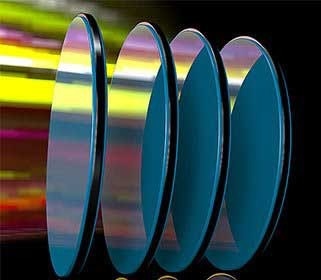Raman spectroscopy is a reliable quantitative and qualitative technique used to examine molecular or material samples. Raman spectroscopy’s sensitivity to a sample’s vibrational structure makes it indispensable for identification.
Each molecule or material has a distinct set of chemical bonds, and the frequency at which these bonds vibrate is determined by the chemical environment. This is what provides each molecule with its unique Raman “fingerprint.” A Raman experiment may also be used to acquire quantitative information by measuring the intensity of the observed transitions. A Raman spectroscopy instrument will typically include a light source, beam handling optics, and a detector.

Image Credit: Iridian Spectral Technologies
Understanding Raman Signals
Raman spectroscopy involves observing molecular vibrations by exciting a vibrational transition in the molecule with light. When light irradiates a sample, some photons will be elastically or inelastically scattered. However, the proportion of photons that scatter inelastically versus elastically is typically far less than one in one million.
Because there is no energy transfer between the incident photon and the sample in elastic scattering, the light detected from the elastic scattering event will have the same wavelength as the incident light. There is an energy transfer between the sample and the photon during an inelastic scattering process and thus a shift in wavelength from that of the incident light.
In Raman spectroscopy, Stokes scattering refers to light that has lost energy due to sample interaction, whereas anti-Stokes scattering refers to light that has gained energy. The energy loss or gain in the Stokes or anti-Stokes spectrum is related to the molecule’s vibrational structure and can be used to identify species.
Stokes lines are generally more intense than anti-Stokes lines because they correspond to interactions with molecules in the ground state. Most experiments conducted under steady-state, room-temperature conditions will have a much higher proportion of molecules in the ground state.1
Raman Spectroscopy Principles and Instrumentation
One of the obstacles in Raman spectroscopy measurements is that the Raman process is not the only one that can be prompted by light. If a molecule is electronically excited by a light source, it may fluoresce, indicating energetic relaxation via photon emission.
The fluorescence background is a major problem in Raman spectroscopy because these background signals have a much wider energy range and are more intense than inelastically scattered Raman signals. Raman signals are inherently weak, having intensity scaling with 1/λ4—where λ is the excitation wavelength used to initiate the Raman process.
Employing shorter wavelength excitation sources in Raman spectroscopy increases the likelihood that there will be enough energy to excite an electronic transition in the sample and initiate a fluorescence process. To fully utilize the power of Raman spectroscopy for sample identification, a meticulous spectrometer design for Raman spectroscopy to inhibit these competing contributions is essential.
Longer wavelength excitation and the use of more sensitive Fourier Transform Raman spectroscopy instruments, as well as surface-enhanced techniques to boost Raman signal levels, have become popular. Optics, such as lenses, are used in Raman spectroscopy to focus beams and increase local excitation energy, and high transmission optics are used to ensure low signal collection losses.
Where Raman Filters Factor
Optical filters are a critical tool for suppressing unwanted signals, whether they are residual light from the excitation source or undesired scattering. In Raman spectroscopy, the right filter selection can greatly enhance signal-to-noise, eliminate undesirable backgrounds, and even enhance instrument resolution.
High-performance filters are critical for achieving optimal performance in Raman spectroscopy instruments, especially when dealing with difficult samples with low signal levels or when very high resolution is required.
References
- Kauffmann, T. H., Kokanyan, N., & Fontana, M. D. (2018). Use of Stokes and anti‐Stokes Raman scattering for new applications. Journal of Raman Spectroscopy, 50, pp. 418–424. https://doi/10.1002/jrs.5523

This information has been sourced, reviewed and adapted from materials provided by Iridian Spectral Technologies.
For more information on this source, please visit Iridian Spectral Technologies.